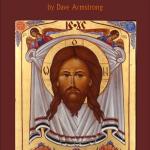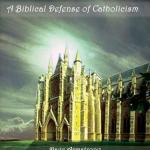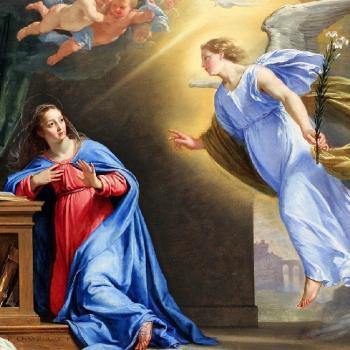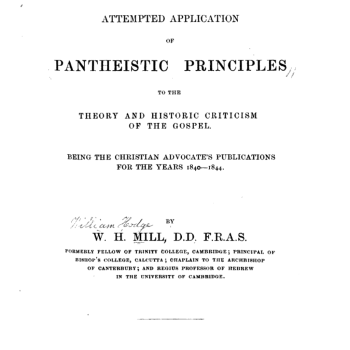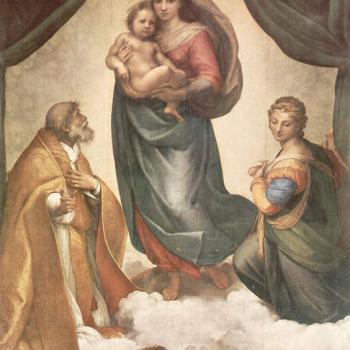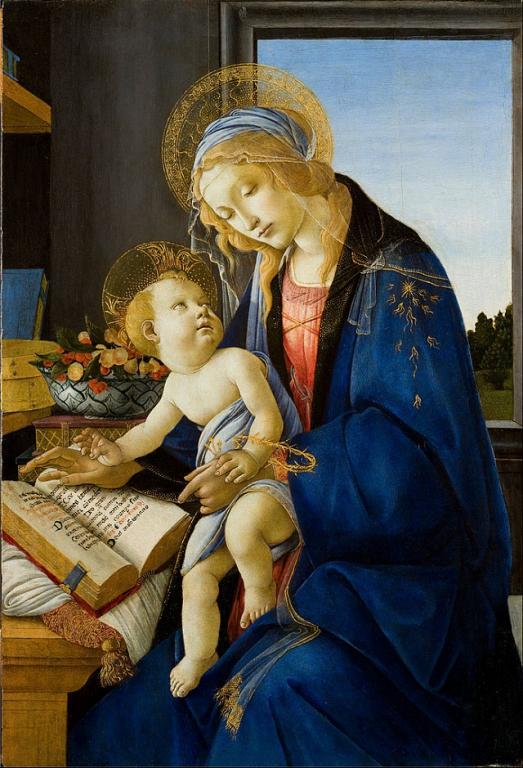
[From the original, much-larger 1994 version of my book, A Biblical Defense of Catholicism. Words of Protestants will be in blue]
*****
I. GENERAL INTRODUCTION
C. S. Lewis
“There is no controversy between Christians which needs to be so delicately touched as this. The Roman Catholic beliefs on that subject are held not only with the ordinary fervour that attaches to all sincere religious belief, but (very naturally) with the peculiar and, as it were, chivalrous sensibility that a man feels when the honour of his mother or his beloved is at stake. It is very difficult so to dissent from them that you will not appear to them a cad as well as a heretic. And contrariwise, the opposed Protestant beliefs on this subject call forth feelings which go down to the very roots of all Monotheism whatever. To radical Protestants it seems that the distinction between Creator and creature (however holy) is imperilled: that Polytheism is risen again. Hence it is hard so to dissent from them that you will not appear something worse than a heretic – an idolator, a Pagan . . .
“One of the things Christians are disagreed about is the importance of their disagreements. When two Christians of different denominations start arguing, it is usually not long before one asks whether such-and-such a point ‘really matters’ and the other replies: ‘Matter? Why, it’s absolutely essential.'” (Mere Christianity, New York: Macmillan, 1952, 7-8)
Robert McAfee Brown
“Each partner must strive for a clear understanding of the faith of the other . . . Neither partner has a right to waste the other’s time by starting the dialogue in total ignorance of the other’s position . . . There are plenty of misunderstandings that can be dispelled by a little honest reading . . .
“Only as the Protestant is willing to let the Catholic explain, in relation to his own devotional life, why Mary is so important to him will the Protestant really be able to understand existentially the importance of the distinction in Catholic theology between the ‘worship’ of God and the ‘veneration’ of Mary, and avoid the typical Protestant error of confusing the terms.” (The Ecumenical Revolution, Garden City, New York: Doubleday, 1967, 72-73)
G. K. Chesterton
Chesterton, a convert from nominal Anglicanism, described the strong prejudice of many Protestants against Mary as:
“That strange mania against Mariolatry; that mad vigilance that watches for the first faint signs of the cult of Mary as for the spots of a plague; that apparently presumes her to be perpetually and secretly encroaching upon the prerogatives of Christ; that logically infers from a mere glimpse of the blue robe the presence of the Scarlet Woman – all that I have never felt or known or understood, even as a child; nor did those who had the care of my childhood. They knew nothing to speak of about the Catholic Church . . . but they did know that noble and beautiful ideas had been presented to the world under the form of this sacred figure, as under that of the Greek gods or heroes.” (The Well and the Shallows, New York: Sheed & Ward, 1935, 173)
Louis Bouyer
“History shows . . . that a Christianity which no longer gives our Lady the homage accorded her by the Church is a mutilated Christianity . . . Once refuse to admit the uniqueness of his Mother and the Christ you think you have kept is but a disfigured Christ; no longer do God and man come together in him . . .
“It is by the study of our Lady that we may hope to discover how God raised up mankind to himself by stooping to her. Protestants imagine that, in so saying, we fail to recognise that Christ was fully human, or that human nature, in the person of Christ, reached a grandeur unattainable by anyone else. We do, however, believe that Christ was perfectly man, yet so perfectly, in so divine a way, that he was not, strictly speaking, a man, a human person, but God made man. That is why we hold it to be so important to reflect upon that wholly human person who was placed, by the Incarnation, in an absolutely unique relation with the Son of God himself.
“A human person, in fact, and no more than a human, became the Mother of God . . . We are, therefore, entitled to see in her, and in her alone, all that grace was able to make of a creature, of human nature, while still leaving it in its order as a created being.” (The Seat of Wisdom, translated by A. V. Littledale, Chicago: Henry Regnery Co., 1965 [orig. 1960], vii-viii)
Karl Adam
“Mary, . . . like every creature in heaven and on earth, . . . was called into existence out of nothingness. An infinite distance separates her from the Infinite, from Father, Son and Holy Ghost. And she has no grace, no virtue, no privilege, which she does not owe to the divine Mediator. Both in her natural and in her supernatural being, she is wholly the gift of God, ‘full of grace’ (Lk 1:28). There is nothing, therefore, so misguided and so preposterous as to decry the Mother of God as some ‘mother goddess,’ and to talk of Catholicism having a polytheistic character. There is but one God, the Triune God, and every created thing lives in awe of His mystery.” (The Spirit of Catholicism, translated by Justin McCann, revised edition, Garden City, New York: Doubleday Image, 1954 [orig. 1924], 113-114)
Nicholas Russo
“In honoring Mary, what else are we doing but imitating the heavenly messenger who saluted her as full of grace, united to God [“the Lord is with thee”], blessed among women? What are all the praises which the Church offers to Mary, . . . but a faint commentary on the words of the archangel? What is the veneration we have for her but the fulfillment of the prophecy made by our heavenly Mother herself when, filled with the Holy Ghost, magnifying the Lord and extolling His mercy, she exclaimed: `All generations shall call me blessed’? (Luke 1:43). To suppress our feelings, therefore, would not only be inconsistent with the filial love we should have for her, but would also contradict the clear teaching of the Gospel.” (The True Religion, New York: P. J. Kenedy & Sons, 1886, 270-271)
Alan Schreck
“All Catholic Christian beliefs about Mary are basically rooted in God’s revelation in the Bible. The Bible presents Mary as a person whom God set apart to play a vital role in his plan of salvation. God honored Mary by eternally predestining her to be the mother of the Savior – the one through whom God himself would enter into human history. What greater gift or dignity could God give to a human being? This honor given to Mary reveals the dignity of all women; a woman is more important in God’s saving plan than any angel or other spiritual being . . .
“God had chosen Mary, . . . but her response to God’s call was crucial. She freely chose to accept God’s plan for her life . . . Catholics honor Mary because of this great faith and obedience.” (Catholic and Christian, Ann Arbor, Michigan: Servant Books, 1984, 166-167)
Joseph Cardinal Ratzinger [Pope Benedict XVI]
“When one recognizes the place assigned to Mary by dogma and tradition, one is solidly rooted in authentic christology . . . It is, moreover in direct service to faith in Christ – not, therefore, primarily out of devotion to the Mother – that the Church has proclaimed her Marian dogmas; first that of her perpetual virginity and divine motherhood and then, after a long period of maturation and reflection, those of her Immaculate Conception and bodily Assumption into heavenly glory. These dogmas protect the original faith in Christ as true God and true man: two natures in a single Person. They also secure the indispensable eschatological tension by pointing to Mary’s Assumption as the immortal destiny that awaits us all . . .
“The mariology of the Church comprises the right relationship, the necessary integration between Scripture and tradition. The four Marian dogmas have their clear foundation in sacred Scripture. But it is there like a seed that grows and bears fruit in the life of tradition just as it finds expression in the liturgy, in the perception of the believing people and in the reflection of theology guided by the Magisterium . . .
“The correct Marian devotion guarantees to faith the coexistence of indispensable ‘reason’ with the equally indispensable ‘reasons of the heart’, as Pascal would say. For the Church, man is neither mere reason nor mere feeling, he is the unity of these two dimensions. The head must reflect with lucidity, but the heart must be able to feel warmth: devotion to Mary . . . thus assures the faith its full human dimension.” (with Vittorio Messori, The Ratzinger Report, translated by Salvator Attanasio and Graham Harrison, San Francisco: Ignatius Press, 1985, 106-108)
Ven. Archbishop Fulton Sheen
“There is, actually, only one person in all humanity of whom God has one picture, and in whom there is a perfect conformity between what He wanted her to be and what she is, and that is His Own Mother. Most of us are a minus sign, in the sense that we do not fulfill the high hopes the Heavenly Father has for us. But Mary is the equal sign. The ideal that God had of her, that she is, and in the flesh. The model and the copy are perfect; she is all that was foreseen, planned, and dreamed. The melody of her life is played, just as it was written. Mary was thought, conceived, and planned as the equal sign between ideal and history, thought and reality, hope and realization . . .
“As Eden was the Paradise of Creation, Mary is the Paradise of the Incarnation, and in her as a Garden was celebrated the first nuptials of God and man. The closer one gets to fire, the greater the heat; the closer one is to God, the greater the purity. But since no one was ever closer to God than the woman whose human portals He threw open to walk this earth, then no one could have been more pure than she . . .
“She is the one whom every man loves when he loves a woman – whether he knows it or not. She is what every woman wants to be, when she looks at herself, . . . she is the secret desire every woman has to be honored and fostered; she is the way every woman wants to command respect and love because of the beauty of her goodness of body and soul . . . This Dream Woman . . . is the one of whom every heart can say in its depth of depths: ‘She is the Woman I love!’ . . . (The World’s First Love, Garden City, New York: Doubleday Image, 1956, 10-11, 13-14, 17)
“The key to understanding Mary is this: We do not start with Mary. We start with Christ, the Son of the Living God! The less we think of Him, the less we think of her; the more we think of Him, the more we think of her; the more we adore His Divinity, the more we venerate her Motherhood; the less we adore His Divinity, the less reason we have for respecting her . . .
“No one . . . who thinks logically about Christ can understand such a question as: ‘Why do you speak so often of His Mother?’ . . .
“It may be objected: ‘Our Lord is enough for me. I have no need of her.’ But He needed her, whether we do or not. And what is more important, Our Blessed Lord gave us His Mother as our Mother . . .
“Mary is a window through which our humanity first catches a glimpse of Divinity on earth. Or perhaps she is more like a magnifying glass, that intensifies our love of her Son, and makes our prayers more bright and burning.
“God, Who made the sun, also made the moon. The moon does not take away from the brilliance of the sun. The moon would only be a burnt-out cinder floating in the immensity of space, were it not for the sun. All its light is reflected from the sun. The Blessed Mother reflects her Divine Son; without Him, she is nothing. With Him, she is the Mother of Men.” (Ibid., 54, 61, 63, 65)
“Mother of God”
Jaroslav Pelikan
“In its fundamental motifs the development of the Christian picture of Mary and the eventual emergence of a Christian doctrine of Mary must be seen in the context of the development of devotion to Christ and, of course, of the development of the doctrine of Christ.
“For it mattered a great deal for christology whether or not one had the right to call Mary Theotokos . . . It was a way of speaking about Christ at least as much as a way of speaking about Mary.” (The Christian Tradition: A History of the Development of Doctrine: Vol.1 of 5: The Emergence of the Catholic Tradition, Chicago: Univ. of Chicago Press, 1971, 241-242)
Max Thurian
“The Ephesian dogma has an essentially Christological import. Mary is not called Mother of God in order that her person may be glorified, but for the sake of Christ, in order that the truth about Christ’s person should be plainly and clearly understood . . .
“If Christ’s humanity is real He has, as a unique person, a true mother, who demands a relationship of mother to son in the full sense, physical, psychological, and spiritual. There is in the reality of the incarnation of God and in the reality of the humanity of Christ a fundamental need for Mary to be called Mother of God, and that she should be a truly human mother and not only an instrument to permit God’s appearing on earth.” (Mary: Mother of all Christians, translated by Neville B. Cryer, New York: Herder & Herder, 1963 [orig. 1962], 74, 79)
II. DEVOTIONAL EXCESSES
Romano Guardini
“There is a way of speaking of Mary which presupposes that honour is proportionate to the abandon with which one enconium is piled upon another. The tendency to speak of Mary in unremitting superlatives is largely to be blamed for an aversion felt by some serious-minded people the moment her name is mentioned . . . This is not to maintain that . . . what we say about her should be little. What is meant is rather that our utterances be genuine in origin, have their source above all in Sacred Scripture.” (Introduction to Josef Weiger, Mary: Mother of Faith, translated by Ruth M. Bethell, Garden City, New York: Doubleday Image, 1962 [orig. 1955], 11-12)
Hilda Graef
“It is just these deviations which have so often turned our separated brethren away from the Mother of our Lord Jesus Christ, and it has seemed to me that there would be a much better chance of making them understand our devotion to her if we frankly admitted that it has at times outrun discretion. True, we all know and say that she is infinitely inferior to her divine Son – yet there is a certain amount of Catholic writing on her which, while admitting this in principle, loses sight of it in practice.
“As Newman said, love has its own language, and when we call Mary our life, our sweetness and our hope, as we do in the ‘Salve Regina,’ this is as natural an expression of affection as that of any lover calling his human love by similar endearments, and takes nothing away from our worship of God, who is our life and hope in quite a different sense. Now, it is one thing to surround Mary with such tokens of love and respect, but quite another to say that God obeys her, that we can appeal from God’s tribunal to hers, that she rules over the kingdom of mercy while leaving to her Son only that of justice, and similar things . . . Therefore I have thought it right to criticize such statements, which can only lead to a quite mistaken idea of what the Church actually does teach about the blessed Virgin.” (A History of Doctrine and Devotion, combined edition of volumes 1 and 2, London: Sheed & Ward, 1965, viii)
Vatican II
“The sacred synod . . . strongly urges theologians and preachers of the word of God to be careful to refrain as much from all false exaggeration as from too summary an attitude in considering the special dignity of the Mother of God. Following the study of Sacred Scripture, the Fathers, the doctors and liturgy of the Church, and under the guidance of the Church’s magisterium, let them rightly illustrate the duties and privileges of the Blessed Virgin which always refer to Christ, the source of all truth, sanctity, and devotion. Let them carefully refrain from whatever might by word or deed lead the separated brethren or any others whatsoever into error about the true doctrine of the Church. Let the faithful remember moreover that true devotion consists neither in sterile or transitory affection, nor in a certain vain credulity, but proceeds from true faith, by which we are led to recognize the excellence of the Mother of God, and we are moved to a filial love towards our mother and to the imitation of her virtues.” (Austin Flannery, editor, Vatican Council II: The Conciliar and Post Conciliar Documents, Northport, New York: Costello, revised edition, 1988, 421-422 / Dogmatic Constitution on the Church, Lumen Gentium, ch. 8, “Our Lady”, IV, 67)
Blessed Pope Paul VI
“The ecumenical aspect of Marian devotion is shown in the Catholic Church’s desire that, without in any way detracting from the unique character of this devotion, every care should be taken to avoid any exaggeration which could mislead other Christian brethren about the true doctrine of the Catholic Church. Similarly, the Church desires that any manifestation of cult which is opposed to correct Catholic practice should be eliminated.” (Apostolic Exhortation Devotion to the Blessed Virgin Mary, Marialis Cultis, Washington D. C.: U. S. Catholic Conference, Feb. 2, 1974, 24)
John McHugh
“There certainly have been, still are, and probably always will be, abuses in Marian devotion. And these are to be condemned, not defended or explained away. I would only add that, as a general rule, not sufficient attention is paid to the many interventions of Popes across the centuries which censure irregularities in Marian devotion. And it is not only Protestants who pay insufficient attention to them; Roman Catholics are the worst offenders. It is sad to note, for example, how little attention has been paid to ‘Marialis Cultus’ in recent years [the document just cited in section 4].” (in Alberic Stacpoole, editor, Mary’s Place in Christian Dialogue, Wilton, Connecticut.: Morehouse-Barlow, 1982, 54)
Max Thurian
“The fear of excess must not give way to a silence and avoidance of Mary in the Christian conscience which would be equally unfaithful to the Gospel of Christ.” (Thurian, ibid., 183)
***
Photo credit: The Virgin and Child (The Madonna of the Book) (1480), by Sandro Botticelli (1445-1510) [public domain / Wikimedia Commons]
***


